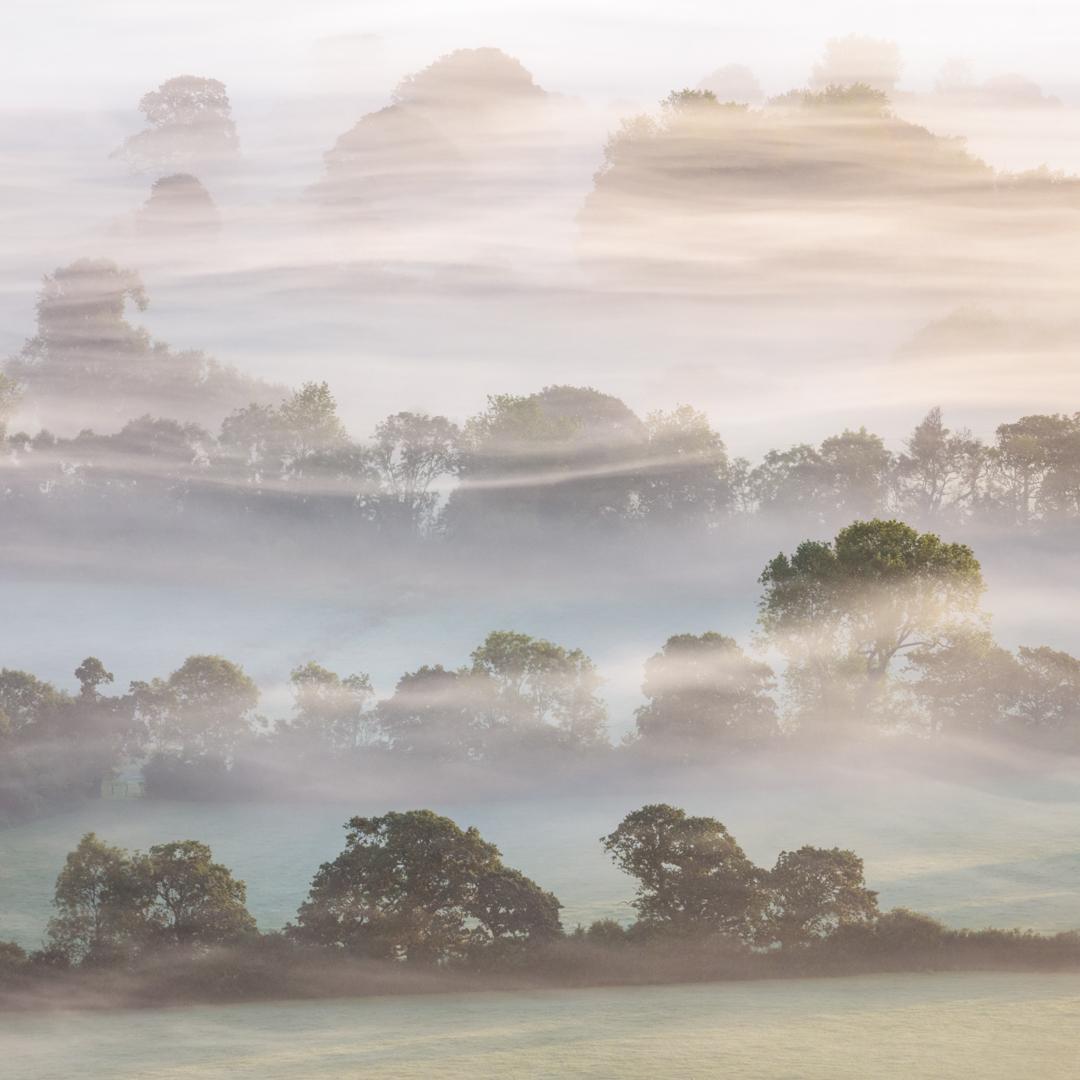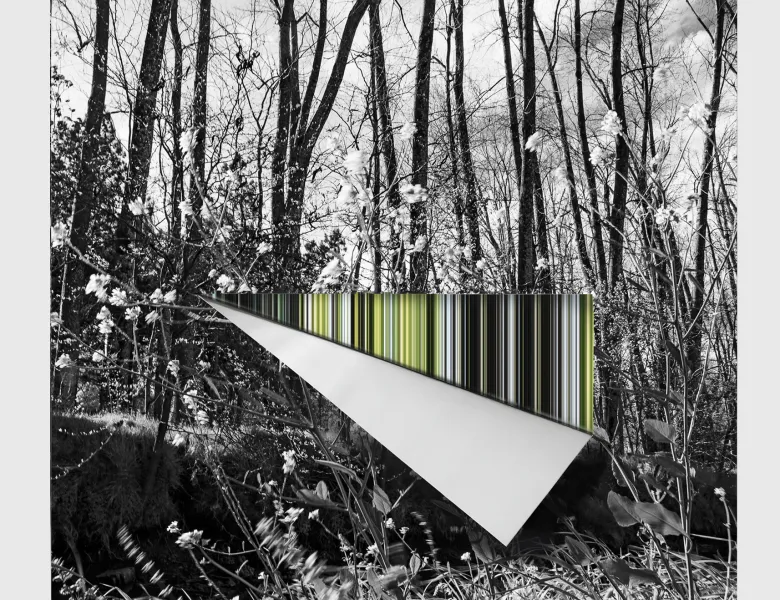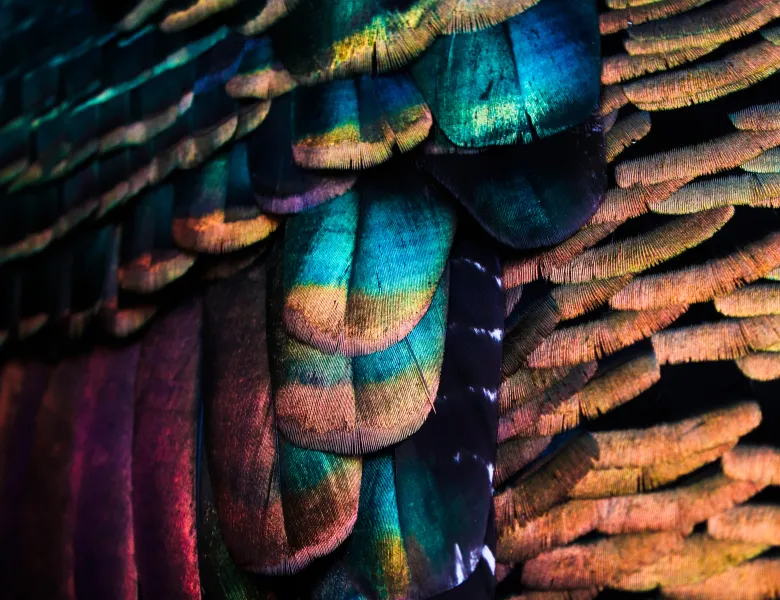This Week's Focus: Finn Hopson

Photographer and gallerist Finn Hopson has made his name by creating artful, abstract depictions of the Sussex South Downs. With a lifelong love for his local landscape, Finn takes pleasure in the new ways it presents itself every single day. He shares how he’s stepped up to the challenge of conveying a sense of place.
What is it about the South Downs that appeals to you as a photographer?
I grew up on the edge of the Downs, and I live a few minutes away from them today. I’ve been spending time in this landscape for as long as I can remember and I can’t imagine ever knowing another place so well. I make repeated visits to the same locations and see all sorts of subtle changes over time. I can learn patterns in the way the land is used, and I feel more and more in tune with the shifting palette of colours and textures over the years. As well as being my most local landscape, the South Downs also have the advantage of being a really accessible place. It’s not wild or untamed and I’ll never find anywhere truly unexplored, but I can get out there in any weather, at any time of day or night, and be totally safe. This opens up all sorts of opportunities to explore.
Who or what are your creative influences?
Eric Ravilious has been a huge influence, particularly his work on the Downs. I see colours and patterns all over the landscape which remind me of his work, especially during the winter months. Franco Fontana’s rather abstract photographs of Italian fields are something I’ve discovered more recently and have really enjoyed. There are so many similarities with my own work, although the Sussex colour palette is rather more muted. I also really enjoy following people who are working on long term projects, documenting a large area over several years and making work that really provides a sense of place. A particular favourite at the moment is (fellow Brightonian) Mark Power’s ‘Good Morning America’ project and the accompanying books. I can’t wait to see the next one when it is published.
As well as being a successful photographer, you own the popular gallery Brighton Photography. How does owning the gallery feed into how you take photos?
I’ve had a more or less permanent exhibition of my work at the gallery for the last seven years and I’ve had hundreds of conversations with people from all over the world. It’s been an amazing way to hear feedback from a really diverse audience and this has given me a better understanding of what people may be interested in seeing. It’s also been a great way to introduce people to new places or new ways of looking at familiar places. At first I was worried that I would end up showing people the most obviously crowd pleasing work or nothing would every sell, but actually I’ve found that having to stand in front of my pictures in person and talk about them so often has helped me to be more confident about showing new work, and worry less about the odd things that some people find to say about it. At a more practical level I’ve found that having a reason to print so much work has helped me learn to make better and better prints, and that in turn feeds into my understanding of what I need to do when shooting in order to really maximise the quality of the final print.
What advice would you give to a photographer looking for gallery representation?
If you can, visit the gallery in person. You don’t have to tell anyone who you are the first time, but it really pays to go there and really make sure that you think your work would be a good fit. When you do get in touch, try to give the gallery an easy way to see your best work. A portfolio on a website works much better than an Instagram link, or go old school and show them some prints. Tell them your story, or the story behind your work. A quick pitch about a coherent collection of work is much better than just a link to some possibly slightly random seeming portfolios. If you can curate the collection to be the best fit possible for the gallery then so much the better. As a gallery it’s also good to know if the photographer has any experience of printing, exhibiting and selling their work in the past. Get a list of possible galleries together and send them any new collections of work as you make them. They may not go for it the first time, but there’s no harm in telling them what you’re up to. If it’s a local gallery, pop in regularly and make some friends, it’s always good to see what people are up to.
Describe your photography in three words.
Simple, local, repetition.
Why do you take pictures?
I’m not entirely sure I know the answer to this one. I have always enjoyed being outside, and I think I find it comforting to spend time in familiar places. There is something very calming about being in a place and just observing it for a time, and I enjoy going back again and again to see what has changed. Whenever I’m there I find it interesting to notice whatever it is that is grabbing my attention more than something else, often a smaller detail in a bigger view, or a particular pattern in the land, or movement of the light. Taking pictures of these things is something to do with trying to work out what the fundamental elements of a particular landscape are and just concentrating on those. What is the visual language that tells the story of this place in particular? It’s about trying to convey a sense of place that is both recognisable to anyone else who knows it, or a little intriguing to those who don’t.
Describe your perfect shoot to date.
I don’t think there has ever been a perfect one. Perhaps my favourite days are when I find something unexpected. I often have an idea of what I’d like to photograph, be that on the Downs or in the sea, but every now and then I come across something completely unexpected in a place I feel I already know well, and it always feels exciting to be reminded that there are always new things to be discovered.
Do you think you’d ever turn towards a completely different subject, like portraiture or still life?
No, it’s taken me years to get this far and I think this is what I’m happiest doing. Although I was surprised at how taking photographs in the water has become the largest part of my work in the last few years. Perhaps there’s another shift ahead in terms of subject matter or approach, but I think it’ll still be unified by trying to convey a sense of place.
What are you currently working on?
I’m close to finishing a book of some of my South Downs ‘Fieldwork’ pictures. It was supposed to have been finished last year but the pandemic pushed it back. It gave me some time to look through the work again, re-sequence it all and add some new images taken during the lockdown. I think it will be a better book after this forced delay. Over the last five years I’ve been spending more and more time taking photographs in the sea, both in Brighton and further along the coast where the South Downs tumbles down into the water. This summer I’ve been exploring further along the coast, trying to swim beneath each stretch of white chalk cliffs and make some new work as I see these very familiar places from an entirely new angle. Living by the sea all my life means that half of the world around me is water, but until recently I’ve always stayed at the edge. Venturing further in has opened my eyes to a whole new way of seeing. There is also an immediacy and spontaneity to taking pictures in the water that is a great contrast with the very planned, controlled approach to my work on the Downs, although I’ve begun to realise that in many ways I’m still drawn to the same kind of patterns and shapes in the water as I find on the hills.
Enjoy Finn Hopson's portfolio here







